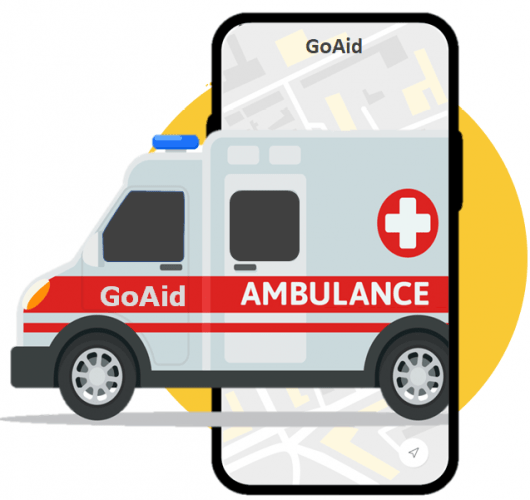Ambulance Services for Pediatric Patients:
In India, people mostly thinks that ambulances for adults, or children are all same. This is not right consideration about ambulances. There are many specialized ambulance services are available for different types of patients such as Pediatric Patients, Adults, Old Patients, Animals and many more.
In this blog, we have listed all the specialty that requires for an ambulance service to be an best Pediatric ambulance service around. In this blog we have added all the special consideration and expertise for ambulance service for Pediatric Patients. After reading this blog entirely, you’ll be able to know about the special consideration and expertise related to ambulances for Pediatric Patients.
So, let’s start-
What are Pediatric Patients?
Pediatric patients are children and teenagers who are 18 years old or younger. Sometimes, young adults up to 21 years old are also considered pediatric patients. Children have different medical needs than adults because their bodies are still growing and developing. This means that they need special care and attention from doctors and healthcare professionals who understand these unique needs.
Pediatric patients can have a wide range of health issues, from common childhood illnesses to more serious conditions that require specialized treatment. It’s important for healthcare providers to have the right training and expertise to take care of pediatric patients and help them get better.
How Pediatric Ambulances are Different from an Normal Ambulance?
We have listed around 10 key differences which you may find between an pediatric ambulance and an normal ambulance in the table below:
Ambulance Services for Pediatric Patients: Special Considerations and Expertise
There are many expertise and special consideration taken into consideration for the special pediatric ambulances. However there are much longer list available for it, but we have added only key considerations and expertise below:
1. Specially Trained Staff
Paramedics and emergency medical technicians (EMTs) who work on pediatric ambulances undergo specialized training in pediatric care, including Pediatric Advanced Life Support (PALS) certification. They are skilled in assessing and treating medical emergencies in children, recognizing developmental differences, and providing age-appropriate interventions.
2. Child-Friendly Environment
Pediatric ambulances are designed to create a comforting and reassuring environment for children. This may include colorful decals, child-friendly decorations, and toys to help alleviate anxiety and fear during transportation.
3. Equipment and Medication
Pediatric ambulances are equipped with pediatric-specific medical equipment and medications, including smaller masks, child-sized blood pressure cuffs, pediatric IVs, and age-appropriate drug dosages. This ensures that medical interventions are tailored to the unique needs of pediatric patients.
Also Read: 10 Reasons to Choose GoAid Ambulance for your Medical Transport
4. Family-Centered Care
Pediatric ambulances often accommodate accompanying parents or guardians, recognizing the importance of family support during medical emergencies. Paramedics and EMTs are trained to communicate effectively with families and provide emotional support.
5. Psychological Support
Pediatric paramedics are skilled in providing psychological support to children who may be frightened or distressed during medical emergencies. They use age-appropriate language, explanations, and reassurance to help alleviate anxiety and create a sense of security.
6. Trauma Care
Pediatric ambulances are equipped and trained to handle pediatric trauma cases. Staff members are proficient in managing injuries, fractures, and head traumas that are specific to children, while taking into account their developing physiology.
7. Respiratory Management
Pediatric patients are particularly prone to respiratory emergencies. Paramedics in pediatric ambulances are skilled in managing pediatric airways, providing respiratory support, and addressing conditions such as asthma, croup, and bronchiolitis.
Also Read: Tips for Administering First Aid Before the Ambulance Arrives
8. Infectious Disease Management
Pediatric ambulances are prepared to handle infectious diseases that are common in children, such as fever, dehydration, and viral infections. Staff members are trained to assess and manage these conditions effectively.
9. Developmental Considerations
Pediatric paramedics understand the developmental stages of children and tailor their interventions accordingly. They take into account factors such as communication style, cognitive abilities, and emotional responses based on the child’s age.
10. Pediatric Transport Coordination
Pediatric ambulances collaborate with hospitals and healthcare facilities to ensure seamless transport and continuity of care. They communicate effectively with receiving medical teams, providing relevant patient information and ensuring the child receives the appropriate level of care upon arrival.
11. Neonatal Transport
Pediatric ambulances are equipped and trained to transport neonates, or newborn infants, who require specialized care. They have the necessary equipment, such as incubators and specialized monitoring devices, to ensure the safety and well-being of neonates during transport.
12. Pain Management
Pediatric paramedics are skilled in assessing and managing pain in children, recognizing that their pain thresholds and responses may differ from those of adults. They use age-appropriate pain scales and administer pain medication in pediatric doses.
Also Read: Ambulance Response in Rural vs. Urban Areas: Bridging the Gap
13. Immunization Awareness
Pediatric ambulances are prepared to handle cases related to vaccine-preventable diseases. Paramedics are knowledgeable about vaccination schedules and can identify symptoms of vaccine-preventable illnesses in children.
14. Hydration and Nutritional Support
Pediatric patients are prone to dehydration and malnutrition, especially during illnesses. Pediatric ambulances are equipped to provide hydration and nutritional support, such as oral rehydration solutions and age-appropriate feeding tubes.
15. Safety and Injury Prevention Education
Pediatric paramedics often play a role in educating parents, guardians, and caregivers about child safety and injury prevention. They provide valuable information and resources to help prevent accidents and injuries in children.







